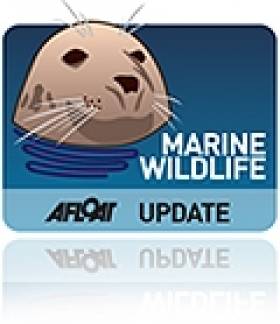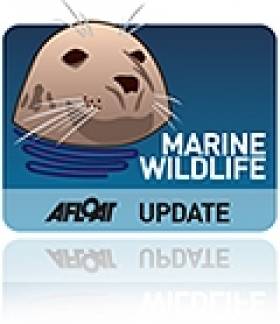Displaying items by tag: endangered
Video of Talk on the 'Mysterious' Basking Shark
#MARINE WILDLIFE - TED have posted video of the Irish Whale and Dolphin Group's Dr Simon Berrow giving a talk on the biggest fish in Ireland's waters, the mysterious basking shark.
The second largest fish in the world, basking sharks are almost extinct, and we know almost nothing about them.
But despite their huge size, we do know that they are among the friendlies of Ireland's marine wildlife.
Recorded at the TEDxDublin event at Dublin's Science Gallery in December 2010, the video above shows Dr Berrow describing the fascinating creature (known as the 'Great Fish of the Sun' in Irish) and the surprisingly low-tech methods he's employing in learning all he can to save them.
Atlantic Salmon on 'Red List' of Endangered Species
Atlantic salmon have joined four other native fish on a 'red list' of endangered species compiled by the Ireland's fisheries and wildlife agencies.
As the Irish Independent reports, one third of the State's 15 native fish species are considered endangered or vulnerable.
One of the worst hit is the European eel, which was found to be critically endangered.
In a report published yesterday, a number of threats were highlighted such as water pollution, invasive species, overfishing, poor river management and climate change.
According to The Irish Times, the Red List was compiled by scientists from organisations across the island including Inland Fisheries Ireland, the National Parks and Wildlife Service, the Northern Ireland Environment Agency and the National Biodiversity Data Centre.
The news comes just a few days after Dublin celebrated the return of wild Atlantic salmon to the River Tolka after more than a century.
The Irish Times has more on the story HERE.
Welsh Keep a Look Out for Leatherback Turtles
Beachgoers in Wales have been urged to watch out for leatherback turtles who have come to the Irish Sea attracted by the rising numbers of jellyfish.
There have already been a dozen sightings of the endangered marine creatures off the UK coast this year, according to the Marine Conservation Society.
“There are so many jellyfish this year, with lots and lots of reports, particularly in the Irish Sea – it’s turtle heaven, there’s so much food for them,” said MSC biodiversity programme manager Dr Peter Richardson.
The society is hoping to identify any hotspots where they can run protective measures.
The leatherback turtle can grow up to 3m long as weigh as much as a tonne. They are often mistaken for floating logs, said Dr Richardson, but "once you see their large reptilian head, massive flippers and ridged leathery shell you can’t mistake them for anything else".
The Western Mail has more on the story HERE.


























































